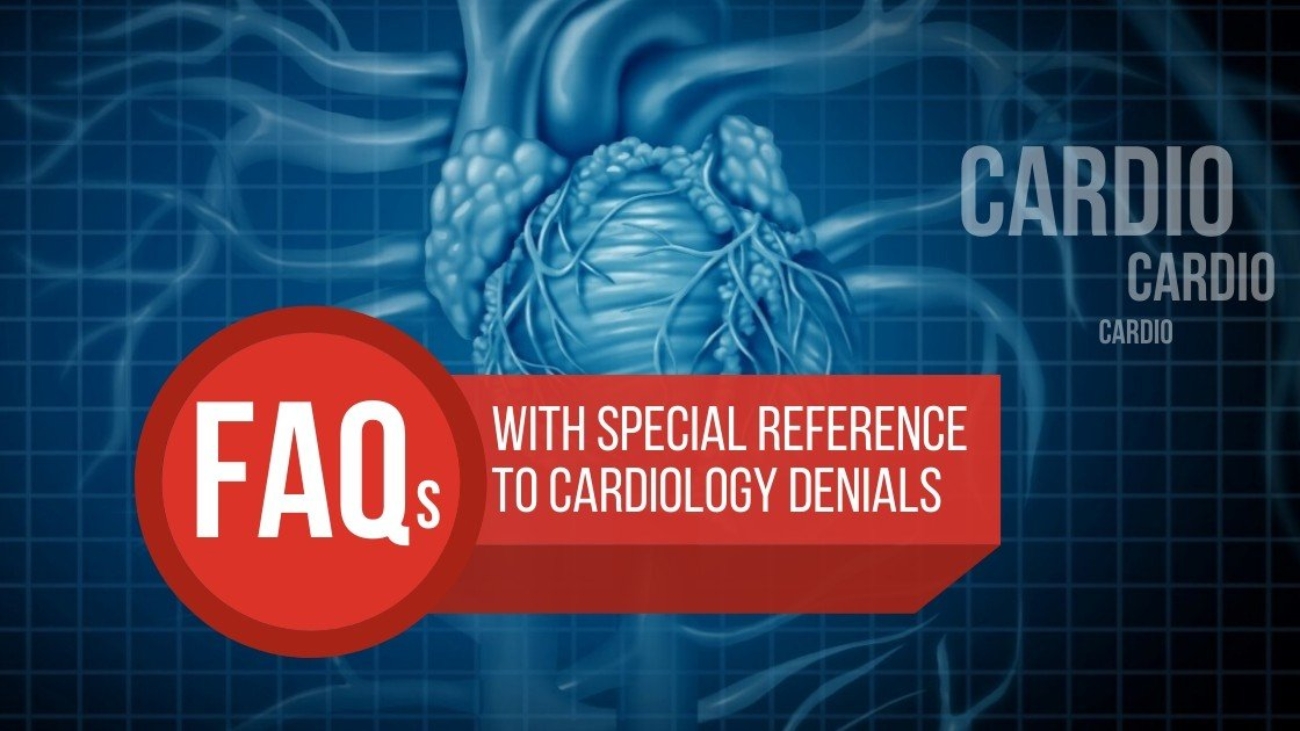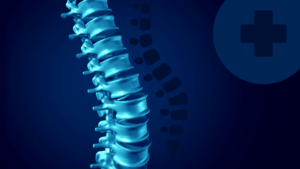If you encounter frequent denials in Cardiology group practices, probably it’s time to recheck medical coding entry.
Cardiology group of practices are often being forced to maintain healthy revenue flow and patient responsibility besides payment denials.
To manage or maintain Revenue Cycle Management in group practices, it is quite expensive and complex.
One of the main reasons for Cardiology denials can be either invalid Cardiology coding or not following LCD guidelines.
Cardiology coding differs from the other group practices’ coding in many ways.
List of areas in Cardiology Coding:
- Diagnostic Cardiology Procedures
- Cardiac and Peripheral interventions
- Peripheral Studies
- Pediatric Cardiology
- Nuclear Medicine
- Ansar Testing
- Modifiers
Diagnostic Cardiology Procedures:
- Cardiac Catheterization is used to diagnose as well as treat certain Cardiovascular diseases or conditions.
- While performing this procedure, a long thin tube called Catheter is inserted into the arteries or veins in the neck, arms or genitals through the blood vessels in order to identify any blockage.
- Cardiovascular diagnosis helps to explore the functioning and current state of cardiovascular system.
- These are used to treat various cardiac abnormalities and diseases. The three main diagnostic procedures those addressed frequently are:
- 1. Cardiac Enzymes
- 2. Stress Testing
- 3. Echo Cardiographs.
- These procedures are usually performed by Cardiologists.
- It’s important to understand the Cath Lab procedure report and decide which code is to be used in that particular area accordingly.
- The top codes used in this area are: 93458, 93459, 93460, 93461.
Cardiac and Peripheral interventions:
WHAT IS CORONARY INTERVENTIONS ?
- Coronary angioplasty is a procedure that opens blocked or narrowed coronary arteries. This process improves blood flow to the heart muscle through blood vessels.
- Angioplasty restores the blood flow to the heart if coronary arteries are blocked because of CHD (Coronary Heart Disease).
WHAT IS A STENT ?
- A Stent is a small meshed tube like object that is used to treat the blocked or narrow arteries.
- Arteries are the Blood vessels those carry blood to all part of the body from heart.
- This procedure of placing Stent in an artery is called Percutaneous Coronary Intervention, which is also referred to Angioplasty.
- Coronary Intervention allows the blood flow through the arteries without any narrow or blockage.
- Stent supports the inner wall of artery for months or years after PCI (Percutaneous Coronary Intervention).
- These Stents are coated with a medicine that gradually enters into the heart muscle and arteries to prevent from further blockages.
CODING:
- Extensive experience and knowledge is essential for Cardiac Stents. It’s Cardiology coder’s responsibility to know proper codes for PTCA and a Stent.
- These Peripheral Interventions can be very tricky to medical billing.
- So, the coder must be accurate while differentiating the types of interventions and apply exact codes based on the diagnosis done.
- The top codes in this area are 92920, 92928, 92937, 92941, 37220 and 37235.
Peripheral Studies:
- It’s a method of performing an ultrasound to identify the forms of vascular disease including Carotid artery disease, Peripheral artery disease, blood clots, deep vein thrombosis (DVT) and venous insufficiency.
- Peripheral studies are usually quick and painless which takes less than an hour.
LIST OF DIFFERENT KINDS OF PERIPHERAL VASCULAR DISEASE:
- Venous studies: It is an ultrasound of veins of arms and legs taken to check or rule out the blood clots or DVT. Patients suffer from pain and swelling.
- Venous Mapping: An ultrasound performed on veins of arms and legs in order to measure the size of veins before bypass surgery.
- Venous Competency exam: These studies are performed to assess the competency of veins in lower potency and also requires an ultrasound as well as compression using blood pressure cuffs.
Arteries:
- Duplex Studies: These studies are to visualize plaque in common ,internal and carotid arteries to perform typically both the sides of the neck. Indications are dizziness, syncope, TIA and stoke.
- Renal Artery Duplex: These are performed to find out renal artery Stenosis where the aorta, iliac, mesenteric arteries as well as kidneys are visualized.
- Aorta/Iliac Duplex: These include measurement throughout aorta to find out aortic aneurysm.
- Pseudoaneurysm: The studies follow Catheterization. Pseudoaneurysm is a hole in the cardiac arterial wall which allows blood to escape under pressure with a false aneurysm.
- Arterial Duplex: It studies the arteries in the upper and lower extremities. Close measurements and velocities are obtained to find out a blood clot. These also include bypass grafts and patient’s symptoms such as numb, cool and pain.
- Transcranial Doppler: These exams are performed on arteries inside the head. Saline is used to detect a hole in the heart (PFO).They are performed behind the neck, ear and over the eye.
- Codes for these types of studies are difficult as the coder must be aware about not only where to perform the procedure but also the method used for the procedure to be performed.
- The top codes are 36200, 36246, 75716, 75710, 75625 and 75630.
Pediatric Cardiology:
- Pediatric Cardiology is a study to diagnose and treat heart diseases or Cardiac conditions in children.
- The patients include children from childhood to adulthood. It is concerned with the diseases of heart in growing and developing children.
- Congenital Deformity: A deformity or abnormal change in the actual size or shape of the body or an organ, caused by a condition that infant is born with.
- Non-Congenital Deformity: A deformity or abnormal change that exists at or before the birth of an infant with a defect or medical condition.
- A complete understanding about the difference between billing for Congenital and Non-Congenital deformities in heart is essential.
- This information becomes crucial while performing echo cardiogram, as the procedure code billed for echo differs based on Congenital or Non-Congenital deformities.
Nuclear Medicine:
- Small amounts of radioactive material is used to diagnose ,evaluate and treat variety of diseases those include cancer, heart diseases, gastrointestinal, endocrine or neurological disorders and other abnormalities.
- Do follow the LCD guidelines properly to analyze appropriate diagnosis codes billed with for the test.
- The top billing codes in this area are 78452, 78492, 93015, 93016, 93018, A9500 and A9502.
Ansar Testing:
- ANSAR (Autonomic Nervous System Testing) is a digital autonomic nervous system monitor which measures autonomic nervous system independently and simultaneously.
- It takes 90-120 minutes to perform autonomic testing.
- ANSAR testing is done to monitor blood pressure, blood flow, heart rate, skin temperature and sweating.
- The test is to measure blood pressure and heart rate include tilt table test, deep breathing test and the valsalva manoeuvre.
- Certain CPT codes are to be known to bill based on the insurance the patient holds and follow LCD guidelines to apply accurate diagnosis code.
- The top codes used to bill in this area are 95921, 92922, 95943.
Modifiers:
- Cardiology codes must be well versed in accurate use of modifiers in addition to multiple surgeries, pacers and Stents. Few modifiers are based on the place of service.
- For example, to perform an echocardiogram in the hospital, it requires 26 modifier but at the same time if the echo is performed in the office then it would not be billed as 26 modifier.
Radiology claim Denials:
Chest X-ray Exams:
- It’s the most commonly performed diagnosis x-ray examinations.
- A chest x-ray produces images of heart, lungs, airways, blood vessels and bones of spine and chest.
- Highest rate of cardiology denials are found among the order for pre-operative chest x-rays or chest x-rays those have thoroughly performed on admission.
- Facilities that follow a standard chest x-rays for patients upon admissions will experience high rates of denials
- When a chest x-ray is ordered, Proper documentation about the patient’s diagnosis is necessary.
Non-Invasive Cardiovascular Studies:
- Mitral Annulus Calcification (MAC) and extensive policies regarding non-invasive CV studies have been varied. They have seen a lot of inappropriate billings on these procedures.
- Be thorough in documenting Peripheral Venous Examinations, Extracranial arterial studies, Peripheral arterial exams.
Bone Density Studies:
- Bone density studies which has specific medical necessity criteria are ordered either for a woman who has been determined to be oestrogen deficient or an individual with vertebral abnormalities.
- Each patients drug therapy is taken into account by the administrators for evaluating bone density study claim.
- It is necessary that physicians provide patients medication while ordering bone density study otherwise the claim will be denied.
Reasons for Cardiology Denials:
- Illegible claims, are which most of the payers and billers do not notice while filing a claim with the insurance companies.
- The medical billers must be cautious evaluating if the claim is eligible for particular service or not, which otherwise might lead to denials.
- Every cardiology procedure depends on its area codes through which claims can be reimbursed without facing any cardiology denials.
- If the coder doesn’t pay attention towards the diagnosis procedure, there is a chance to enter an invalid code.
- Confused with the coding areas, it can be another most important reasons for the cardiology denials.
- As cardiology relates to different types of diagnosis performed accordingly and carries out different coding areas, inappropriate codes will push the claims towards denials.
- By not following the LCD guidelines, the medical biller puts the claim at risk which eventually leads to a denial.
- Cardiology denials mostly take place due to wrong or invalid coding and not paying attention to LCD guidelines
- The areas of cardiology coding are very critical that the codes are evaluated and based on the place and service performed differently.
- Not all codes needs to be similar. If not updated, the claims are denied.
How to overcome Cardiology Denials:
- Follow accurate coding system while claiming a payment with the insurance.
- Follow LCD guidelines properly in order to stop your claims from being rejected.
- Each diagnosis procedure in Cardiology follows different areas of coding which the medical billers have to focus on to stop denials.
- Based on the procedures and diagnosis, valid coding must be performed to avoid denials.
- Appropriate coding system and accurate coding entry will always save the claim from being denied.
- Every cardiology study and process is taken to categorize different coding areas accordingly. Before filing a claim, it is essential to check the area codes thoroughly.
Process Followed for Cardiology Medical Billing:
Medical Billing companies must ensure complete transparency in Cardiology medical billing process to understand and handle projects smoothly.
Here are some steps to get faster reimbursements:
-
Execution of Services:
When the services are selected, it’s essential to ensure the paper work that is necessary for the service execution which also includes business associate agreement.
-
Project Allocation:
A dedicated team with project manager and certified as well as qualified medical billing and coding professionals are allocated for end-to-end cardiology billing.
-
Secure Data Capture:
Secured FTP can be established for safe transformation of data and also to support easy access to EHR and DMS.
-
Data Quality Check:
All forms and documents are to be well checked for errors which enhances to achieve greater reimbursements.
-
Denial Management:
When claims are denied due to missing data or errors, the rectification of the process must be quicker to resubmit the claim for secure reimbursements.
-
Claim Submission Finally:
A verified claim is transmitted in a format relevant to insurance companies. So, it’s important to send files securely and safely to avoid fraudulent modifications.




